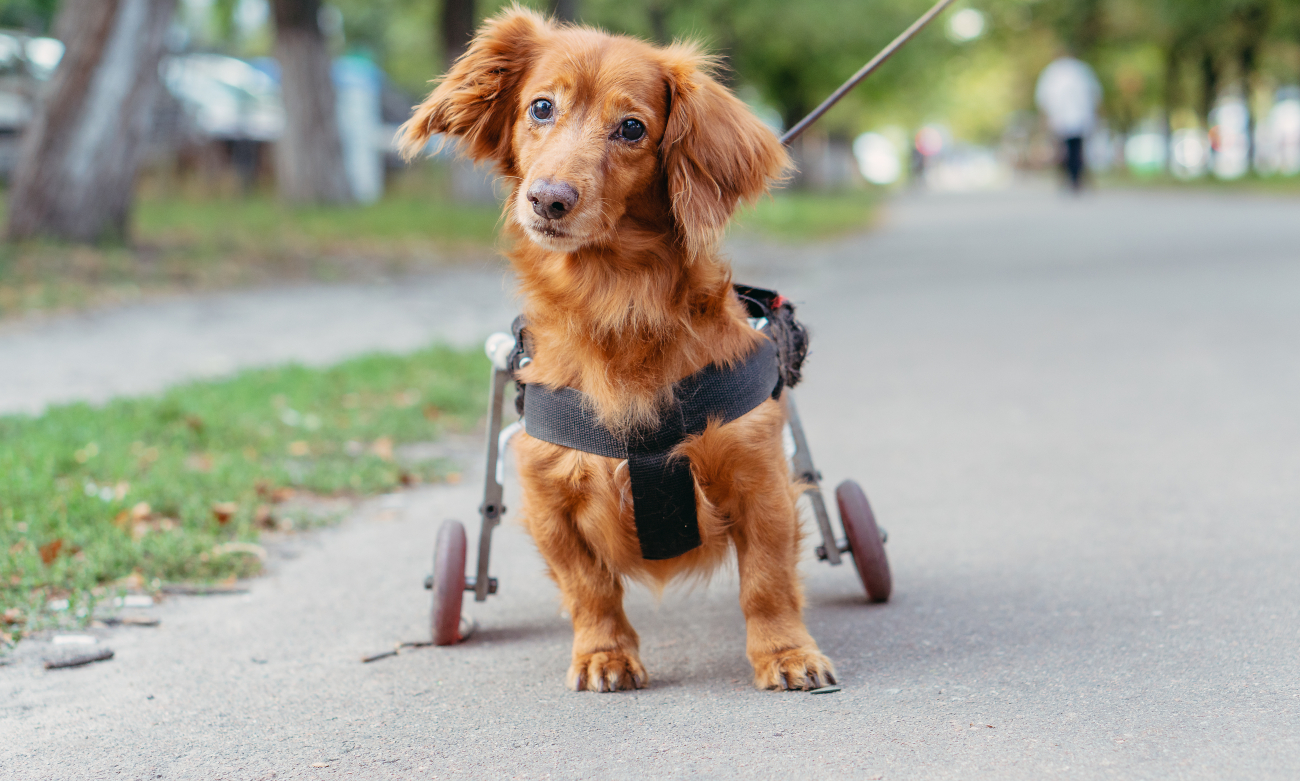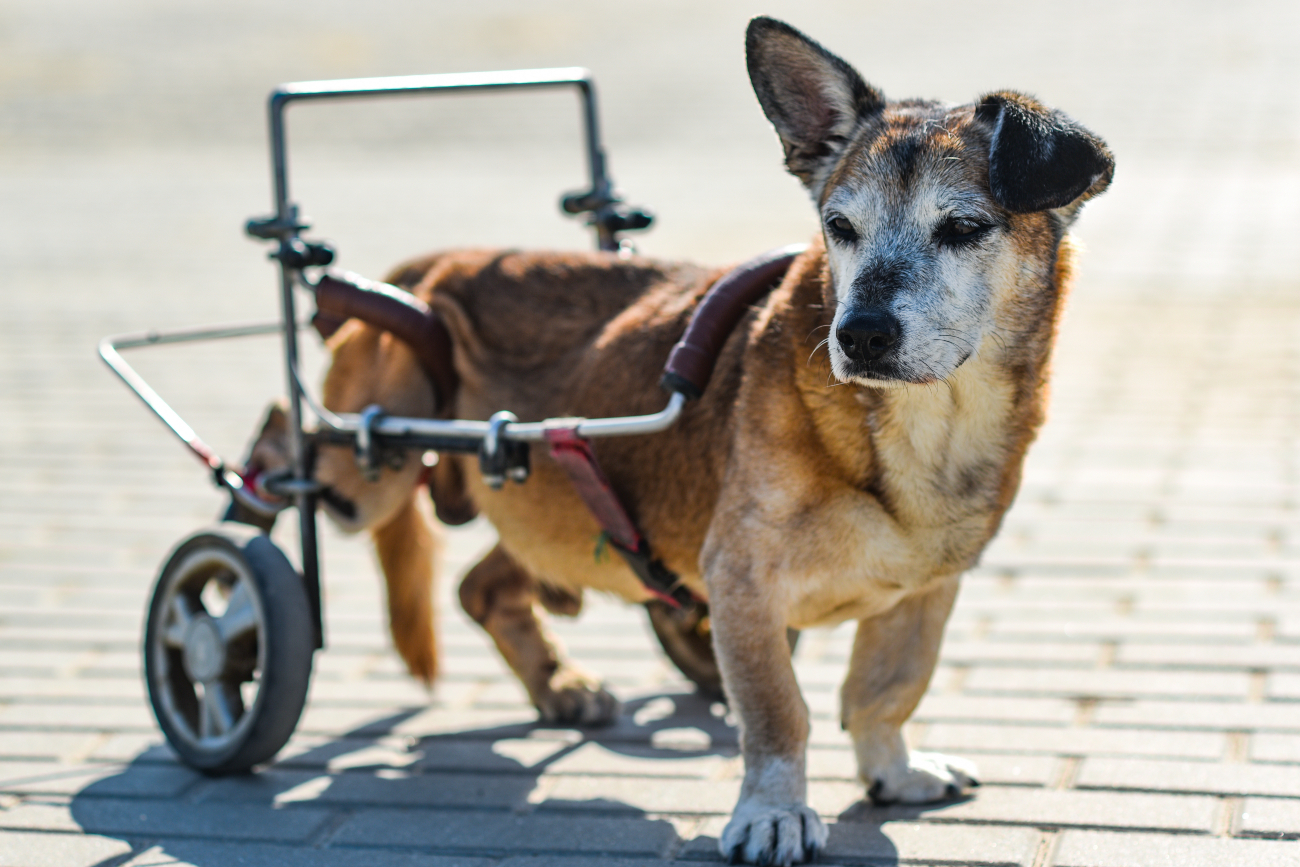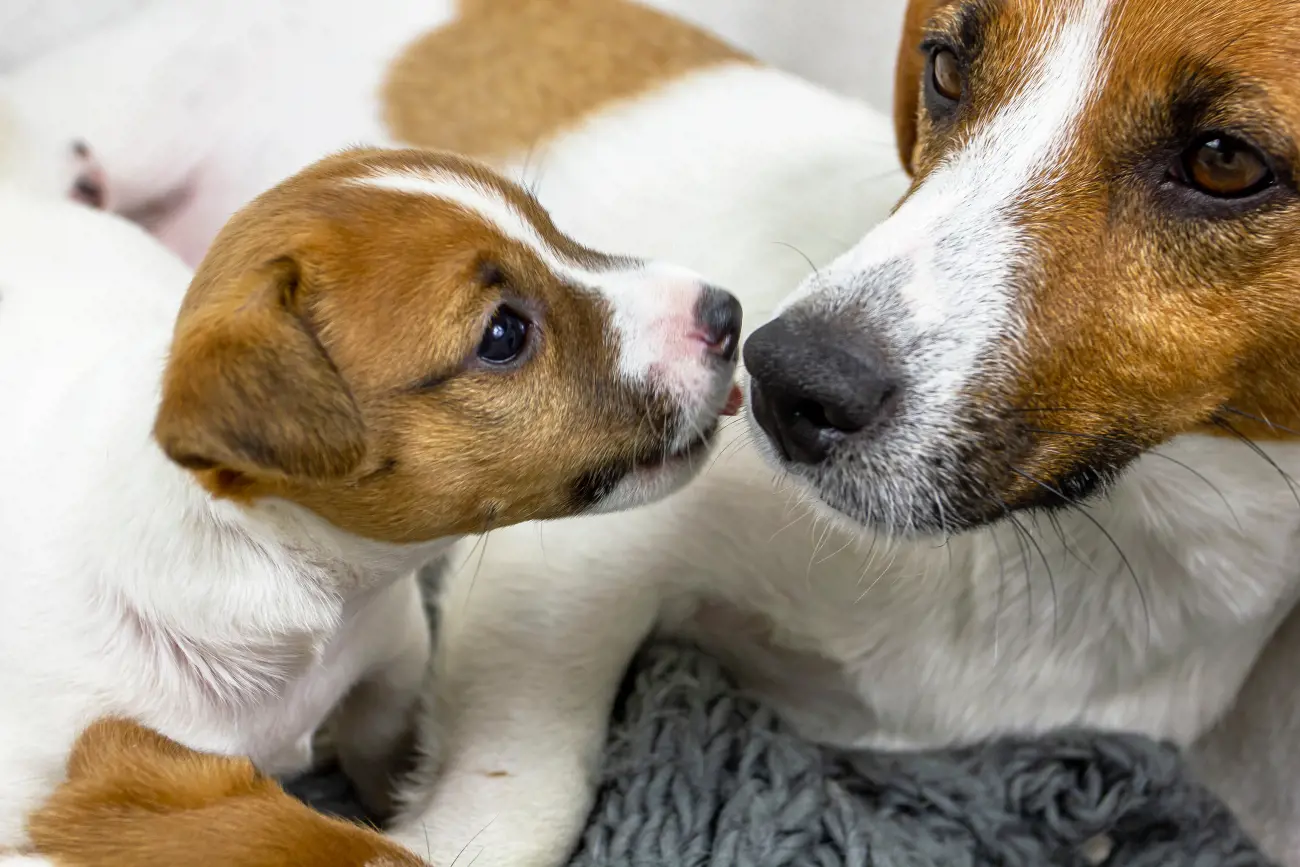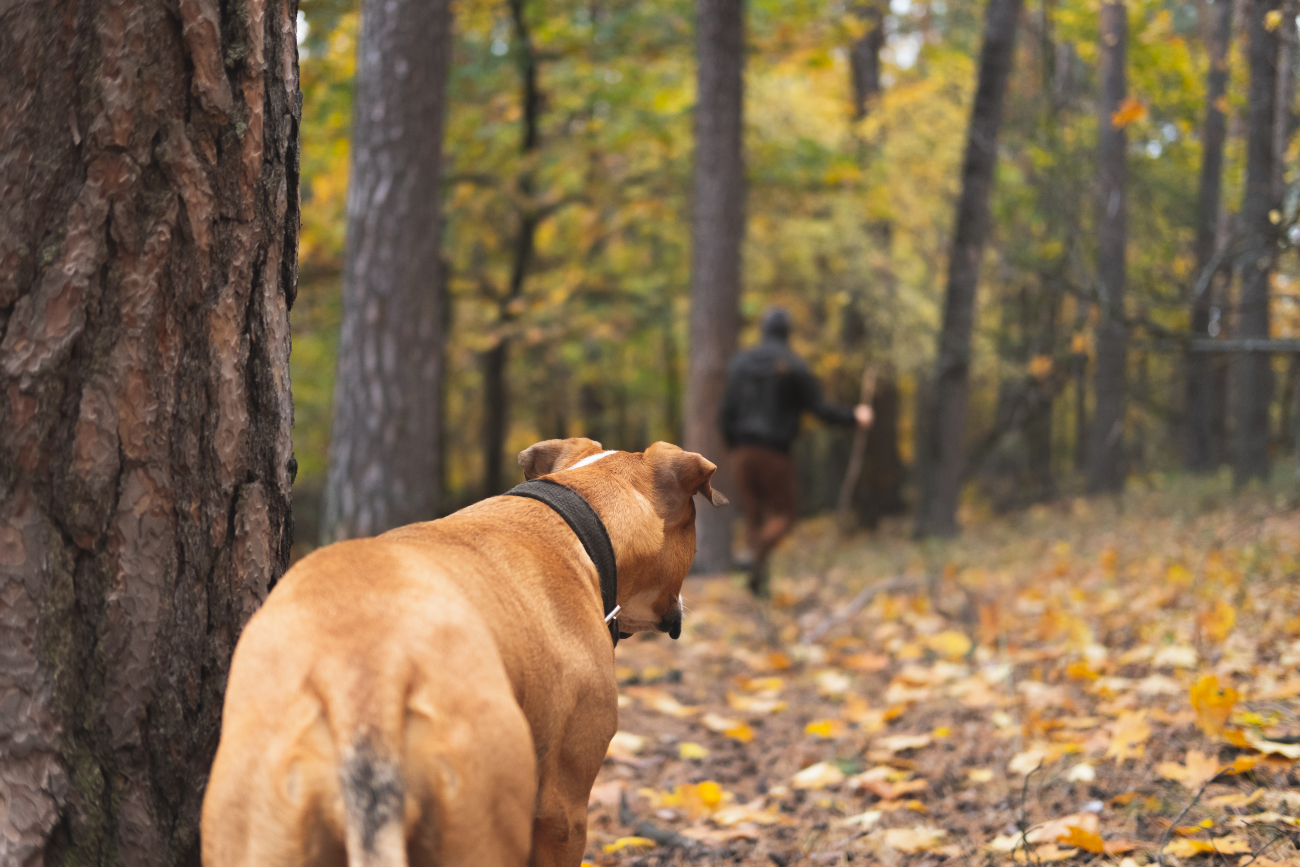What you should know about caring for a disabled pet
8th May, 2024

Caring for a disabled pet is a unique and rewarding journey, filled with challenges and triumphs. This guide covers what you need to know about caring for a disabled pet in the UK and at home, offering you practical tips, advice and insights to support your pet in the best possible way.
Introduction to disabled pets
While pets with disabilities may face more challenges than their non-disabled counterparts, they are often just as loving, resilient, and loyal. They may require additional care and resources, but the rewards of caring for a disabled pet are numerous.
Here's what you need to know about caring for a disabled pet in the UK and your other pets at home.
Understanding pet disabilities
Like humans, animals can have a range of disabilities, from sensory impairments such as deafness or blindness, to mobility issues or chronic health conditions. Some pets are born with disabilities, while others may acquire them due to accidents, illness, or old age.
Common types of disabilities in pets include:
- Mobility issues: Some pets may have difficulty moving due to conditions affecting their limbs or nerves. This could be due to a congenital abnormality, degenerative disc disease, a traumatic event such as a car accident, or simply ageing. However, with the help of prosthetics, wheelchairs, or physical therapy, pets with physical disabilities can regain some of their mobility and live active lives.
- Sensory impairments: Pets can lose their sight or hearing due to congenital defects, diseases, or conditions associated with ageing. Whether it is due to genetics, trauma, or diseases such as cataracts, losing their sight can be a major challenge for these animals. Being deaf can make it more difficult for cats and dogs to interact with their owners and other animals. However, with patience and the use of visual cues, hand signals or sign language, deaf pets can still receive love and care.
- Chronic health conditions: Conditions such as epilepsy, diabetes, and arthritis can also be considered disabilities, as they may require ongoing management and can impact a pet's quality of life.
Common hidden disabilities in cats and dogs
When we think of disabilities in pets, we often imagine physical impairments like missing limbs or blindness. However, there are many common hidden disabilities that affect cats and dogs that we may not even be aware of.
These disabilities can greatly impact their quality of life and require special attention and care from their pet owners:
- Anxiety: Just like humans, pets can experience anxiety and it can manifest in various ways such as excessive barking, destructive behaviour, or withdrawal. It can be caused by a variety of factors including past trauma, changes in environment, or even genetics. Recognising the signs of anxiety in our furry friends is crucial in order to provide them with the support they need to feel safe and secure.
- Sensory impairment: Cats and dogs can have difficulty with hearing or vision, but it may not be obvious to us right away. They may show signs of confusion or disorientation, bumping into objects, or not responding to commands as they used to. Regular check-ups with a veterinarian can help identify these disabilities and allow for appropriate accommodations to be made.
- Cognitive dysfunction syndrome (CDS): Similar to Alzheimer's disease in humans, CDS can cause memory loss, confusion, and changes in behaviour. It can be challenging to diagnose since the symptoms can be subtle at first, but with proper veterinary care and management, pets with CDS can still lead happy and fulfilling lives. Check out our blog on signs of dementia in pets to learn more about this.
Adopting or fostering a disabled pet: Key considerations
When considering adopting or fostering a disabled pet, there are a few key factors to consider:
- Do you have the time, resources, and lifestyle to accommodate a pet with special needs? Disabled animals may require more frequent vet visits, specific diets, lifestyle adjustments, and possibly modifications to your home to accommodate their needs.
- Are you prepared for the financial implications? Depending on the nature of your pet's disability, you may face increased medical costs, including specialist consultations, medication, and physical therapy. You may also need to invest in special equipment or modifications to your home to better accommodate your pet.
- Do you have a support network in place? Caring for a disabled pet can be challenging, and having a network of supportive friends, family, and professionals can make a significant difference.
Home modifications for disabled pets
Depending on the nature of your pet's disability, you may need to make modifications to your home to make it more accessible and comfortable for them. Here are some common home modifications for disabled pets:
- Ramps and non-slip mats: If your pet has mobility issues, installing pet ramps and non-slip mats can help them navigate your home more easily.
- Fencing off hazardous areas: For pets with sensory impairments, fencing off hazardous areas such as stairs or balconies can prevent accidents.
- Accessible feeding and drinking stations: Elevated food and water bowls can make eating and drinking easier for pets with mobility issues.
- Comfortable bedding: A pet with mobility issues or chronic pain may benefit from a comfortable, supportive bed.
Daily care for disabled pets
Caring for a disabled pet often involves adapting your daily routine to accommodate their needs. This could include things like:
- Feeding: Some disabled pets may require a special diet or need assistance eating and drinking.
- Exercise: Depending on your pet's disability, they may need modified exercise routines.
- Bathroom habits: Disabled pets may require assistance with their bathroom habits, or need special litter boxes or pee pads.
- Medication and health checks: Disabled pets often require regular vet checks and may need medication or other treatments.
Emotional bonding and mental stimulation
While physical care is important, don't forget about your pet's emotional and mental wellbeing. Disabled pets can benefit greatly from plenty of mental stimulation and emotional bonding.
Spend quality time with your pet, play with them, and provide them with proper care and plenty of love and attention.
How do you play with a disabled dog or cat?
Playing with a disabled cat or dog can be a unique and rewarding experience. While it may require some extra patience and creativity, there are many ways to engage and entertain a dog or cat with mobility or sensory challenges.
To start, it's important to understand the specific limitations of the pet in question. For example, a dog with limited mobility may struggle with games that involve running or jumping, while a cat with impaired vision may need toys that make noise or have a distinct texture. Once you have a sense of these challenges, you can adapt your play style accordingly.
One fun option is to use puzzle toys or games that stimulate the pet's mind. This can include treat-dispensing toys, hide-and-seek games, or even simple scent-based activities. For dogs, you might also consider teaching them new tricks or commands that challenge them mentally.
Another great way to play with a disabled cat and dog is through touch-based interactions. This can include:
- Gentle massages
- Petting sessions
- Specialised brushes or grooming tools that cater to the pet's unique needs
For cats, you might also try using toys that vibrate or provide different textures.
Support and resources for disabled pet owners
Looking after disabled dogs or cats can be challenging, but you don't have to do it alone.
Reach out to support groups and online communities, where you can connect with other disabled dog or cat owners and share experiences, advice, and resources.
What does a purple dog coat mean?
Ever wondered about the significance of a purple dog coat? It's more than just a fashion statement. In fact, a purple dog coat indicates that the canine wearing it is a service dog.
These specially trained dogs assist human individuals with disabilities, and the purple colour is a way to easily identify them in public.
But what exactly do service dogs do? They are trained to perform a variety of tasks depending on the needs of their handler:
- Some service dogs assist individuals with mobility impairments by retrieving items or providing support when walking
- Others are trained to detect changes in blood sugar levels for people with diabetes or alert their handler to an oncoming seizure
- Service dogs can even provide emotional support for individuals with mental health conditions
The tasks they perform are truly remarkable and can be life-changing for those they assist.
Conclusion

Caring for a disabled pet may require extra time, effort, and resources, but the rewards are immeasurable. By understanding the needs of your disabled pet and providing them with the necessary care and support, you can help them lead a fulfilling, happy and healthy life together.
Remember to take care of your own needs, too, and reach out for support when needed. With love, patience, and commitment, you can make a world of difference in the life of a disabled pet.
As pet parents, this guide is your compass, guiding you with what you should know about caring for a disabled pet in the UK and at home. It may be a challenge, but the rewards are well worth the commitment.
To get a dog insurance quote for your furry friend, you can get a quote through our website. If you would like to talk to one of our pet insurance team, you can get in touch with us on 0330 102 5748.
Helpful Pages
Recent Posts

What is my cat thinking?
10/05/24Pet Insurance Quote
- 98% claims paid *
- Claims paid directly to vets
- 24/7 vet video consultations
- Interest free monthly payments


